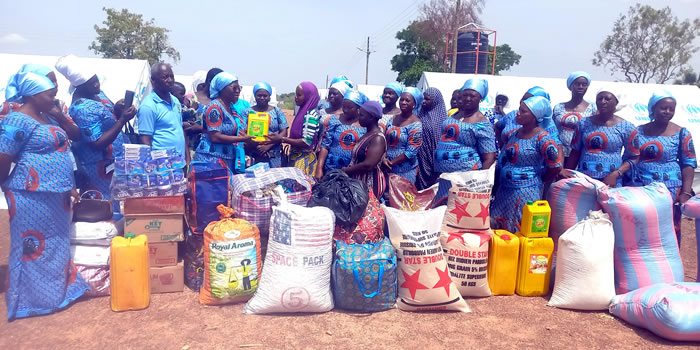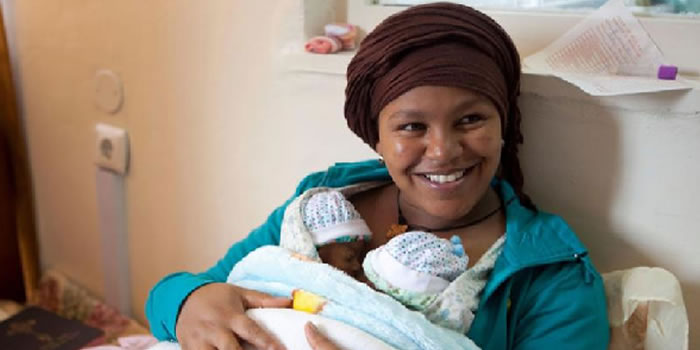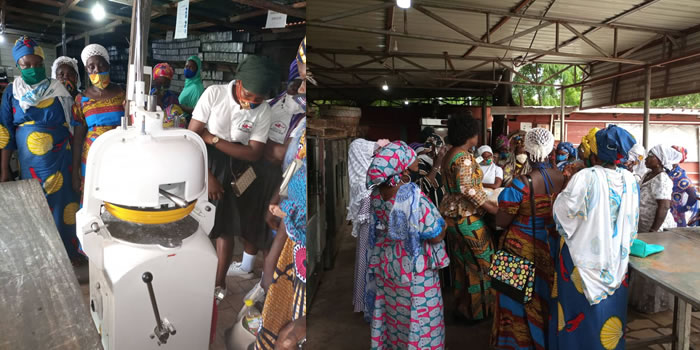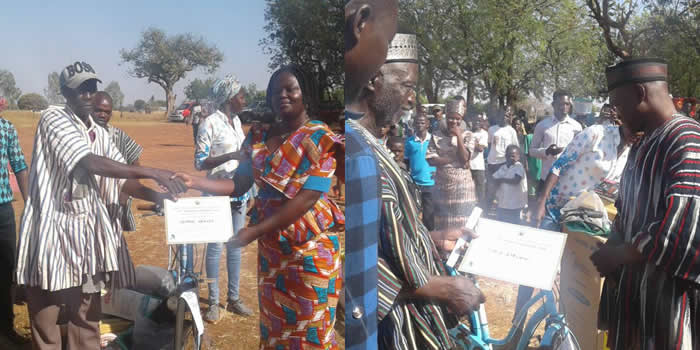

Introduction
Demographic characteristics such as population size, composition and age-sex structure are important determinants of the potential labour force and basic social amenities such as schools, recreational centres, health centres, housing etc. needed to raise the standard of living of the people. This chapter presents information on the population size and distribution, age-sex structure, migration, fertility and mortality pertaining to the Bawku West District.
Population Size and Distribution
Population size and sex by locality
Table 2.1 shows the population size by locality of residence and sex in the Bawku West District.
The 2010 Population and Housing Census indicated the total population of the district to be 94,034, with more females (52.0%) than males (48.2 %).
The population of the district constitutes 9.0 percent of the regional population. The population in the district is concentrated more in rural (90.8%) than urban areas (9.2%). The district’s rural population (90.8%) is higher than the regional rural population (79.0%). The sex distribution shows that more females reside in urban (52.9%) than in rural areas (51.9%); while few males reside in urban (47.1%) than in rural areas (48.1%).
Age dependency ratio
Age dependency ratio is the ratio of the dependent population (population less than 15 years and population aged 65 years and older) to the working-age population (15-64 years). Table 2.2 indicates that the total dependency ratio in the district is 108.6, which means that for every 100 people in the working-age population, there are 108 dependents to cater for. Furthermore, the child dependency ratio (94.2) is higher than the old age dependency ratio (14.4).
Age-Sex Structure
Age and sex are the most critical characteristics of any population. Age-sex structure indicates the number of male and female in the 5 years age cohort. Table 2.3 reveals that the male cohort population is slightly higher than that of the female population aged 0-4 years through to 15-19 years and then reverses in favour of females from age 20-24 years onwards. The proportion of the population aged 0-14 years constitutes 45.2 percent while population aged 15-64 years is 47.9 percent and that for those aged 65 years and older, is 6.9 percent.
The relatively high (33.3%) youthful population of 15-39 years in the district has an in-built momentum for rapid population growth as well as economic growth.
The age structure of the population in the district is in a form of a broad base, made up of a large number of children and a small number of elderly persons at the top. With increasing age, the age-sex structure looks slightly thinner for the males than for females, indicating that the proportion of males reduces faster than that of the females as the age increases. As shown 21
in Figure 2.1, there is a high proportion of the population aged 0-4 years (14.8%) and 5-9 years (16.3%) which indicates that the population in the district has the prospect to grow for a considerable number of years. Also the broad base nature of the population clearly indicates that, there is a heavy concentration (45.2%) of the population in the younger ages (below 15 years).
Fertility, Mortality and Migration
Fertility
Fertility, for the purposes of this report, means the total number of live births that females, 15 years and older, ever had during their lifetime. Measures of fertility are important in determining the size and structure of the population and therefore critical for the management of the population for social and economic development.
The commonly used measures of fertility are the Total Fertility Rate (which means the number of children a woman would have by the end of her childbearing years if she were to experience the currently observed age-specific fertility rates) and its component, Age-specific Fertility Rate (which also means the number of children a woman within a specific age group would have for the main purpose of knowing differences in fertility behaviour in each age group). The Crude Birth Rate indicates the number of live births per 1,000 population in a given year
Current Fertility
Table 2.4 indicates a total fertility rate of 3.7 children per woman aged 15-49 years which is slightly higher than the regional average (3.4 children per woman). This implies that a woman living in the district would have an average of 3.7 children by the end of her reproductive period, if the age-specific fertility rates were observed.
The district’s total fertility rate is the third highest in the region. On the other hand, the crude birth rate for the district stands at 23.7, which is also higher than the regional figure of 22.6, and again the district has the third highest crude birth rate in the region. The General Fertility Rate of 106.3 for the district is also higher than the regional figure (97.5).
Table 2.4 further shows that 27,784 females, representing 22.3 percent of district’s population, and 243,377 females, representing 23.3 percent of region’s population, belong to the reproductive age group (15-49years)
Lifetime Fertility (Number of Children Ever Born)
Table 2.5 presents information on the number of children ever born to the female population 12 years and older and children surviving. The table shows that the district has 32,077 females with children ever born being 110,479 indicating that there are three children to every female (12 years and older). The number of children ever born increases progressively from 15 children (for women aged 12-14 years) to 14,189 children (for women aged 35-39 years) and then starts to decline for women aged 40 years and older. The same pattern is observed for both male children and female children even born and surviving.
Also, children ever born to women aged 65years and above is 27.6 percent which is the highest, whereas children ever born to women aged 12-14 years is the least. In another vein, women aged 20-24 and 25-29 years have 89.0 percent of their children surviving while those aged 60+ years have the least percentage of 66.5 of their children surviving.
Women aged 25-29 years have 88.1 percent (the highest) and women aged 12-14 years have 62.5 percent (the lowest) of their surviving children to be females. Similarly women aged 20-24 years have 91.1 percent (the highest) whilst women aged 60+ years have 67.8 percent (the lowest) of their surviving children to be males.
Mortality
Mortality provides an indication of the health status of the population as well as a measure of the living condition of the people. According to 2010 PHC, mortality relates to deaths that occur in the household during the 12 months preceding the census night.
Table 2.6 presents information on total population of deaths in households and crude death rates, by district and region.
The table indicates that, the district recorded 838 deaths that occurred in households during the 12 months preceding the census night, presenting 7.4 per cent of the regional household deaths. The data show that the district recorded a crude death rate (per 1,000) of 8.9 which is lower than the regional figure of 10.8. The district’s rate is the lowest in the region.
Table 2.7 shows that death due to accident/violence/homicide/suicide is only 5.1 percent, while the remaining 94.9 percent is due to other causes. The data shows that the district has a relatively low accident/violence/homicide/suicide deaths compared to other district in the region
Age-specific mortality rates
Figure 2.2 shows reported age specific death rates by sex. The table shows that the reported age specific death rate declines steadily from the under 5 year group to the 15-19 year group and begins to increase gradually to the 20-24 year group for both sex.
The female age specific death rate then continuously increases gradually to the 45-49 year group, then decreases slowly to the 55-59 year group and increases sharply through to the 70+ years. The male specific death rate also increases gradually from the 20-24 year group to the 40-45 year group, then decreases sharply to the 45-49 year group and finally increases sharply through to the 70+ at a faster rate than female.
Migration
Migration refers to change in usual place of residence from one administrative district to another for not less than six months. The importance of measuring migration lies in its impact on population size, structure and distribution. Table 2.8 describes birthplace by duration of residence of migrants in the Bawku West District.
From the table, migrants constitute 9,098 of the population in the district. A total of 4,065 of the migrants in the district were born elsewhere in the region, followed by 5,033 born elsewhere in another region while the remaining 709 were born outside Ghana.
As presented in the Table 2.8, the majority (35.8%) of migrants born elsewhere in the region have stayed 20+ years while the least percentage of 14.7 have stayed less than 10-19 years. On the other hand, 25.5 percent of the migrants born outside Ghana have stayed 20+ years relative to 11.6 percent who have stayed less than 1 year. In totality, 26.3 percent of migrants living in the district have stayed 1-4 years while 14.7 percent have stayed for l0-19 years. This suggests that migration is a permanent phenomenon for the majority of migrants in the district.
Date Created : 11/18/2017 4:32:36 AM










 facebook
facebook
 twitter
twitter
 Youtube
Youtube
 +233 593 831 280
+233 593 831 280 0800 430 430
0800 430 430 GPS: GE-231-4383
GPS: GE-231-4383 info@ghanadistricts.com
info@ghanadistricts.com Box GP1044, Accra, Ghana
Box GP1044, Accra, Ghana